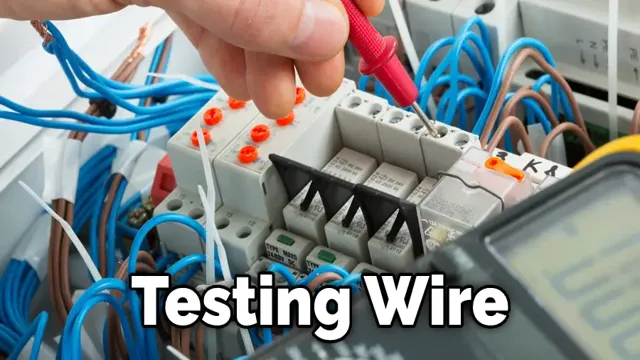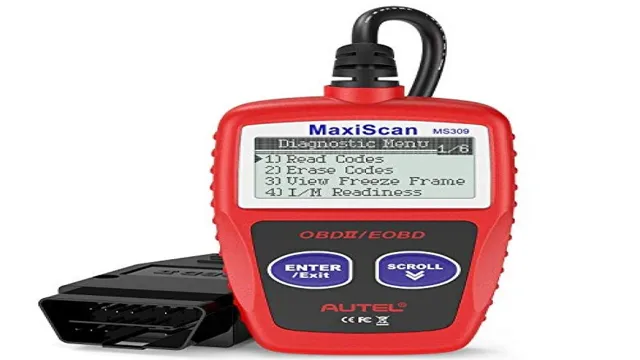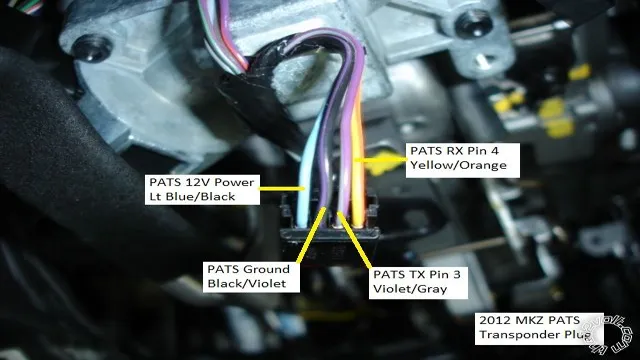Shedding Light on How to Easily Find Your Reverse Light Wire: A Step-by-Step Guide
Have you ever struggled with finding the reverse light wire on your vehicle? It can be a frustrating and confusing task, but fear not! In this blog post, we will explore various methods and tips to easily locate the reverse light wire on your car or truck. Whether you are installing backup cameras or simply replacing a blown bulb, understanding how to find the reverse light wire can save you time, money, and headaches. So grab your multimeter and let’s dive in!
What Is Reverse Light Wire?
If you are looking to install a backup camera, a dash cam or any other device that requires a reverse light connection, you may be wondering how to find reverse light wire in your car. Look for the reverse light near the tail light assembly of your vehicle. It is usually the white wire with a red stripe or the solid green wire that connects to your reverse light.
The reverse light is activated when the car is put into the reverse gear, which allows you to see clearly what is behind you when backing up your vehicle. Once you have identified the reverse light wire, connect it to the power wire of your device and you’re ready to install it. Remember to always follow manufacturer instructions, consult a professional if needed, and take all necessary safety precautions.
Explanation of Reverse Light Wire Function
Reverse light wire is an essential component in a vehicle’s lighting system that plays a vital role in ensuring the safety of the driver and other road users. It is a wire designed to connect the vehicle’s reverse light to the power source. When a driver shifts to reverse gear, the reverse light activates, illuminating the area behind the vehicle and alerting other drivers and pedestrians that the vehicle is about to move backward.
The function of the reverse light wire is to trigger this light each time the driver shifts to reverse gear. If the wire is faulty or damaged, the reverse light will not function correctly, putting the driver and other road users at risk. Therefore, it is crucial to ensure that the reverse light wire is in good condition and correctly connected for effective and safe operation.

Tools You Need
If you’re looking to install a backup camera or replace your broken reverse light, you’ll need to locate the reverse light wire in your vehicle. To find the wire, you’ll need a few tools. The first is a wiring diagram for your specific make and model of car.
This will give you a better idea of where the wire is located and what it looks like. You’ll also need a multimeter, which is a tool that can measure electrical voltage and resistance. You can use this to test the wires in your car and determine which one is for the reverse light.
You’ll also need wire strippers and connectors to make a secure connection with the wire. Finally, you’ll need a few basic hand tools such as pliers and screwdrivers to access the wiring in your car. With these tools, you can easily locate the reverse light wire and complete your installation or repair project.
Don’t forget to take the necessary safety precautions when working with electrical wiring, such as disconnecting the battery before starting the work.
List of Necessary Tools
As a beginner or an experienced handyman, having the right tools can make your job much easier and efficient. Here is a list of necessary tools to have in your toolbox. First of all, a hammer is essential for installing nails and pulling them out.
A set of screwdrivers is also necessary, including Phillips and flathead screwdrivers. Pliers are required for trimming wires and holding items in place. A measuring tape is crucial for accurate measurements, and a level will come in handy to make sure your projects are straight and even.
A cordless drill is an absolute must-have to make installing screws much faster and easier. A set of saws, including a handsaw and a circular saw, will be needed for cutting wood and other materials. Finally, a pair of safety glasses is always necessary when working with any tools, protecting your eyes from flying debris.
Owning these essential tools will give you the freedom to tackle any task and complete the job quickly.
Locating Reverse Light Wire
If you’re installing any electrical equipment in your car, one of the most important things you need to do is find the reverse light wire. This is the wire that runs from your car’s transmission to the reverse lights at the back of your vehicle. The reverse light wire is crucial because it triggers your reverse lights when you shift into reverse, making it easier for you to see what’s behind you when backing up.
But how do you find it? One way is to consult your car’s wiring diagram, which will show you the color and location of the reverse light wire. Another option is to use a multimeter to test the wires until you find the one that carries current when you shift into reverse. Once you’ve located the reverse light wire, you can connect it to your new equipment and enjoy enhanced safety and convenience on the road.
Remember to always take safety precautions when working with electrical systems in your car, and consult a professional if you’re unsure about anything.
Step-by-step Guide to Finding Reverse Light Wire
When it comes to finding the reverse light wire, it might seem like a daunting task at first. However, with a little patience and know-how, you can locate the wire in just a few simple steps. First, start by identifying your vehicle’s tail light assembly.
Next, use a voltmeter or multimeter to measure the voltage on each wire coming from the tail light assembly. When you put the car in reverse and the lights turn on, you’ll notice a voltage spike in one of the wires. This voltage spike indicates that you’ve found the reverse light wire.
Once you’ve identified the correct wire, it’s time to tap into it in order to power your reverse camera or other accessory. With the right tools and a little know-how, locating your vehicle’s reverse light wire should be a breeze.
Testing the Connection
Are you trying to install backup cameras or other reverse light-related equipment but can’t figure out which wire connects to the reverse light? Fear not, for finding the reverse light wire is not as complicated as it might seem. First, locate the reverse light bulb on the back of your vehicle, usually near the license plate or the rear bumper. Once you’ve found it, you’ll need to use a multimeter to measure the voltage of the wire that connects to the bulb.
Turn on the car and shift to reverse, and the voltage should go from zero to around 12 volts. That wire is the one you’re looking for. Keep in mind that different car models might have different colored wires, so it’s essential to consult your vehicle’s wiring diagram to avoid confusion.
Once you’ve found the right wire, you’re ready to connect your backup camera or other reverse light-related device. Now you can quickly and safely back up your car with confidence, knowing that your equipment is properly connected to the reverse light wire.
How to Test the Connection of Reverse Light Wire
If you’re trying to test the connection of your reverse light wire, it might seem tricky at first. But with a few simple steps, you can easily diagnose and troubleshoot any issues you might be having. First, start by locating the reverse light wire, which is typically located near the back of the car or truck.
Next, you’ll need to use a voltmeter to test the voltage of the wire. If there’s no voltage, then the issue might be with the connection between the wire and the light itself. Check for any loose or damaged wires and try reconnecting them.
If there is voltage but the light isn’t turning on, then the bulb might be burnt out and in need of replacement. By following these steps, you can quickly and easily diagnose any issues with your reverse light wire connection.
Conclusion
In conclusion, finding the reverse light wire may seem like a daunting task, but fear not! With a bit of patience, a little bit of detective work, and some electrical knowledge (or a helpful YouTube tutorial), you too can locate this elusive wire. So put on your detective hat, grab your electrical tester, and get to work! Just remember, if all else fails, you could always just put the car in reverse and see what lights up. But where’s the fun in that?”
Summing Up the Tips and Tools for Finding Reverse Light Wire
After going through all the tips and tools to find the reverse light wire, it’s important to test the connection to ensure that everything is working properly. One way to do this is to turn the ignition on, shift your car into reverse, and observe if the lights come on. If they do, then you’ve successfully connected the reverse light wire.
However, if they don’t, then you may need to go back and double-check your wiring. Another option is to use a multimeter to test the voltage of the wire and ensure that it’s carrying the necessary voltage. Don’t forget to be careful and follow safety precautions when testing the connection to avoid electrical shocks or damage to your car’s electrical system.
By properly testing the connection, you can ensure that your reverse lights are working correctly and help prevent accidents while backing up.
FAQs
What is a reverse light wire?
A reverse light wire is a wire in the vehicle’s electrical system that connects to the reverse light bulb and sends power to it when the vehicle is put into reverse gear.
Why do you need to find the reverse light wire?
You may need to find the reverse light wire for various reasons, such as installing a backup camera or parking sensors.
How do you locate the reverse light wire in a vehicle?
The simplest way to locate the reverse light wire in a vehicle is to consult the owner’s manual or a wiring diagram. Alternatively, you can use a multimeter to test the wires near the backup light bulb while the vehicle is in reverse gear.
Can you tap into any wire for a backup camera?
No, it is important to tap into the correct wire, which is the reverse light wire, to ensure that the camera turns on only when the vehicle is in reverse.
What color is the reverse light wire in most vehicles?
The reverse light wire is typically green or green with a white stripe in most vehicles, but it is always best to consult the wiring diagram or owner’s manual for your specific vehicle model.






